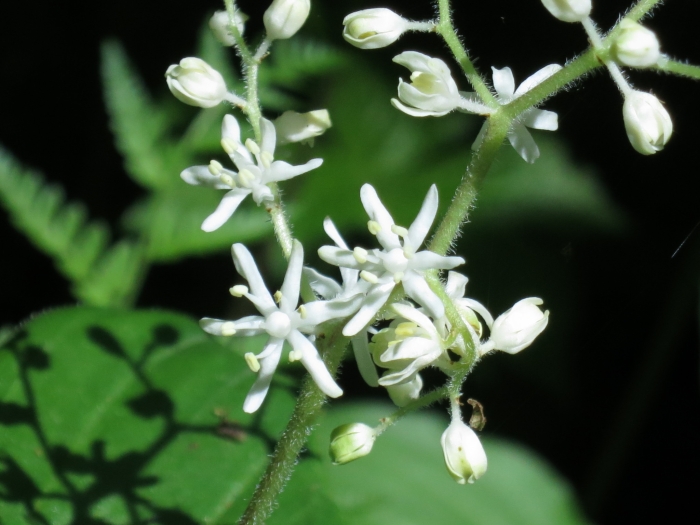Japanese May Lily
(Maianthemum japonicum)
Japanese May Lily (Maianthemum japonicum)
/
/

Repina Tatyana
CC BY 4.0
Image By:
Repina Tatyana
Recorded By:
Copyright:
CC BY 4.0
Copyright Notice:
Photo by: Repina Tatyana | License Type: CC BY 4.0 | License URL: http://creativecommons.org/licenses/by/4.0/ | Rights Holder: Repina Tatyana | Publisher: iNaturalist | Date Created: 2020-05-28T10:40:05-07:00 |

























Estimated Native Range
Summary
Maianthemum japonicum, commonly known as Japanese May Lily, is a deciduous perennial herb that is native to the understory of cool, moist deciduous and mixed forests in Eastern Asia, including Japan, Korea, and parts of China. It typically grows to a height of 2-3 feet (0.6-0.9 meters) and spreads 1-3 feet (0.3-0.9 meters) wide. The plant features lance-shaped leaves and racemes of small, star-shaped, white flowers that bloom in late spring to early summer, followed by small black berries in late summer. The flowers are modestly showy and attract pollinators.
Japanese May Lily is valued for its graceful arching stems and attractive foliage, which can add a delicate texture to woodland gardens and shaded borders. It is often used as a ground cover in shady areas and is appreciated for its low maintenance requirements. While it prefers consistently moist, well-drained soils, it is adaptable to a range of soil types, including clay, loam, and sandy soils. It thrives in part shade to full shade and requires regular watering to maintain its lush appearance. Gardeners should be aware that it can spread via rhizomes and may need to be controlled in small garden spaces.CC BY-SA 4.0
Japanese May Lily is valued for its graceful arching stems and attractive foliage, which can add a delicate texture to woodland gardens and shaded borders. It is often used as a ground cover in shady areas and is appreciated for its low maintenance requirements. While it prefers consistently moist, well-drained soils, it is adaptable to a range of soil types, including clay, loam, and sandy soils. It thrives in part shade to full shade and requires regular watering to maintain its lush appearance. Gardeners should be aware that it can spread via rhizomes and may need to be controlled in small garden spaces.CC BY-SA 4.0
Plant Description
- Plant Type: Herb
- Height: 2-3 feet
- Width: 1-3 feet
- Growth Rate: Moderate
- Flower Color: White
- Flowering Season: Spring
- Leaf Retention: Deciduous
Growth Requirements
- Sun: Part Shade, Full Shade
- Water: Medium
- Drainage: Medium
Common Uses
Border Plant, Low Maintenance
Natural Habitat
Native to the understory of cool, moist deciduous and mixed forests in Eastern Asia
Other Names
Common Names: Japanese Solomon’s Seal, Japanese False Lily of the Valley
Scientific Names: , Maianthemum japonicum, Maianthemum japonicum, Smilacina hirta, Smilacina japonica, Smilacina japonica f. lutecarpa, Smilacina japonica f. trinervis, Smilacina japonica f. trinervis, Smilacina japonica subsp. hirta, Smilacina japonica subsp. lutecarpa
GBIF Accepted Name: